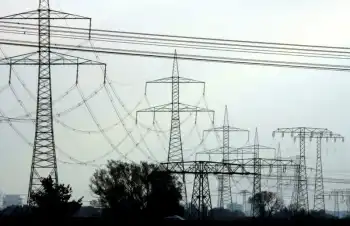Transmission battles are only beginning
By Record-Searchlight
Arc Flash Training CSA Z462 - Electrical Safety Essentials
Our customized live online or in‑person group training can be delivered to your staff at your location.

- Live Online
- 6 hours Instructor-led
- Group Training Available
That's one message out of a report from the Renewable Energy Transmission Initiative, a state-sponsored survey of potential nonpolluting electricity sources and the new power lines needed to connect them to our crowded cities.
Ironically, it was an earlier RETI report that helped galvanize opposition to the Transmission Authority of Northern California's project. It showed that eastern Lassen County was a relatively poor source of alternative power.
The latest RETI study hammers home the fact that, even though TANC — a coalition of municipal utilities including Redding Electric — ended its proposed power lines through the north state earlier this summer, this story is just beginning.
RETI's conceptual plans include a major line, owned by Pacific Gas and Electric Co. and other utilities, running through Tehama, Shasta and Siskiyou counties on its way to the Pacific Northwest and Canada. PG&E hasn't released a specific route, but the company has confirmed that it would like to build a grid stretching the length of the West Coast, plugging into Oregon's windmills and Canada's hydroelectric dams.
And even the TANC Transmission Project, whose death opponents celebrated less than a month ago, lingers like a zombie.
Critics knocked the TANC project as a "power line to nowhere," because its stated goals included tapping unbuilt wind and solar projects in Lassen County, but the analysts at RETI still hold hope for the state's northeastern corner, however limited its potential.
"Future RETI work may be needed to identify alternative transmission solutions for accessing the Lassen and Round Mountain" renewable energy zones, the report states in a section addressing the power line's demise.
Meanwhile, one of the Legislature's top priorities in its last month in session this year is to dramatically raise the "renewable portfolio standard." Utilities currently must draw 20 percent of their supply from renewable power; several bills would raise that to 33 percent by 2020.
That insatiable demand for new power sources will create intense pressure for new power lines - many of which will reach north.
The utilities are preparing, laying the foundation for new transmission lines that will meet their needs. Property owners, county officials and anyone who loves the north state need to do the same.











